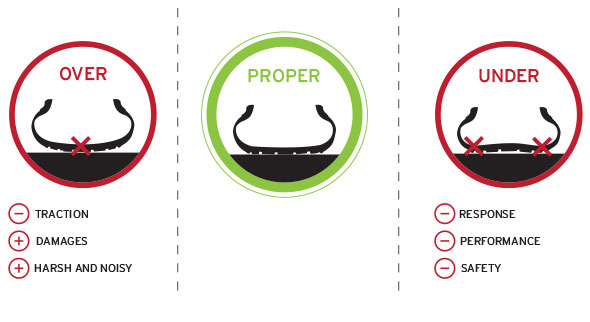Improving fuel efficiency

Improving fuel efficiency refers to the attempt to achieve higher fuel efficiency through a variety of means in a vehicle in an attempt to save money and reduce emissions. To learn about technical ways car manufacturers are trying to create cars with a greater ability to use fuel efficiently, please see kinetic energy recovery systems, or regenerative braking.
People commonly talk about conserving energy, but the conservation of energy is unavoidable since it's a physical law! This page discusses ways to conserve (use less) fuel (usually gasoline); reducing fuel use in cars saves money as well as reducing environmental impact.
Speed
Certain factors like a car's brakes and shape affect fuel efficiency. It is possible to install improved brakes, but the cost-benefit trade off is usually not worth it. However, where and how the driver operates the vehicle also affects the efficiency. During highway driving, power output correlates to the air drag. This drag is due to the drag coefficient (a constant for a particular shape) multiplied by the velocity cubed. This means that slowing down by 10% uses 27% less power from the engine![2] This does not mean that people should drive everywhere at 30 kph, but at the same time, it does mean that in fifth gear while driving on the highway, considerably better fuel efficiency can be achieved in most cars by slowing down just a bit (going 120 kph uses 70% more power than going 100 kph).
Acceleration
In a similar vein, limiting rapid acceleration is an excellent way to conserve fuel. In most cases, when the engine is in gear, efficiency relates to how fast the wheels are turning. Modern car engines (approximately year 2000 and up) will not use any fuel at all when the gas pedal isn't being pressed and the vehicle is rolling. This means that when driving down a hill, removing foot pressure from the accelerator will cause the engine not use any fuel at all. However, floor it, and the injectors will insert the maximum amount of fuel.
An exception to this rule is at idling speeds, even if the pedal isn't being pressed the vehicle must burn fuel to keep the engine from stalling while sitting still. This means that turning off a car's engine while waiting for someone at the side of the road will save fuel, but don't turn off the engine at a stop light, that could cause a bad car accident!
Engine speed
When at a constant cruising speed in a Mazda Protege, for example, the highest fuel efficiency is at around 3000 RPM. This is because the engine converts the fuel to work more efficiently, meaning it requires less fuel to run at 3000 RPM than it does at 1200 RPM. The same holds true for most small cars and can be tested with a manual transmission by driving at a set speed in two different gears. See how far down the pedal needs to be pressed when both accelerating and maintaining speed in the different gears. The closer to the floor the gas pedal is, the more fuel it is injecting into the engine, so it is possible to tell which gear is using more fuel (i.e the one with the least amount of foot pressure). Furthermore, more modern vehicles have gauges that denote exactly how much fuel is being consumed at any given time making it much easier to find the optimal cruising speed or RPM for differing vehicles.
Tire pressure
Perhaps it doesn't seem like it matters much, but where a vehicle comes in contact with the road—the wheels— is highly important for fuel efficiency. The EPA estimates that fuel efficiency can improve by up to 3.3% by having properly inflated tires, thus decreasing rolling resistance between the tires and the road.[3] This is true for anything with wheels—even peddling a bike with deflated tires is extremely difficult and requires much more energy. The only difference is where that energy comes from—most vehicles harness chemical energy by burning fossil fuels, whereas a person peddling a bike harnesses energy by consuming food. To help quantify the difference in rolling resistance, notice how much slower a mountain bike rolls down a hill compared to a road bike.
For Further Reading
For further information please see the related pages below:
- Regenerative braking
- Kinetic energy recovery system
- Friction
- Transportation energy use
- Electric vehicle
- Or explore a random page
References
- ↑ Image taken from: http://www.tyresizecalculator.com/tyres/tyre-pressure, accessed May 18th, 2018.
- ↑ which is 27% less power. Keep in mind that while this also means less energy is used, more time is spent using the energy. It's still an improvement (about 18% instead of 27%), but not as strong of one, please see energy vs power.
- ↑ http://www.fueleconomy.gov/feg/maintain.jsp
- ↑ Image and ideas taken from: https://www.tirebuyer.com/education/tire-pressure-and-performance, accessed May 18th, 2018.


